#Kailua-Kona Landscape Design
Explore tagged Tumblr posts
Text
Kailua-Kona Landscaping Services | Landscape Installation and Maintenance | Hawaii Landscaping
Kailua-Kona landscaping services include landscape design, lawn mowing and maintenance, turf installation and excavation services, Hawaii Island.
#Landscaping design#Hawaii Landscaping#Kailua-Kona#Installation and Maintenance#Landscaping Services#Kailua-Kona Landscape Design
0 notes
Text



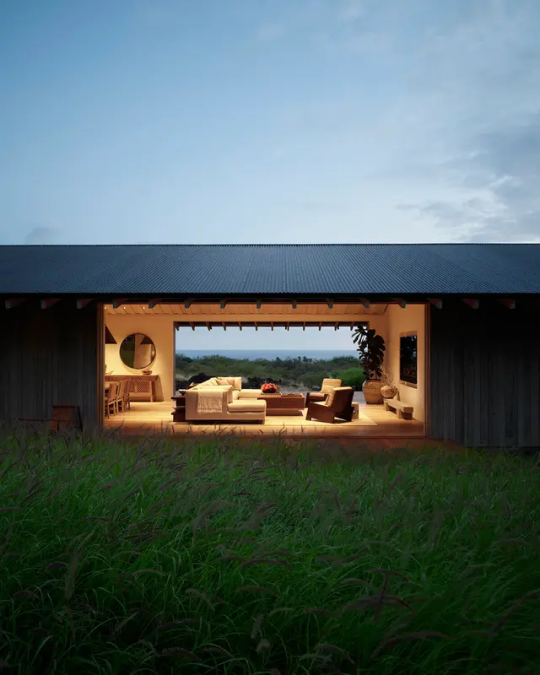



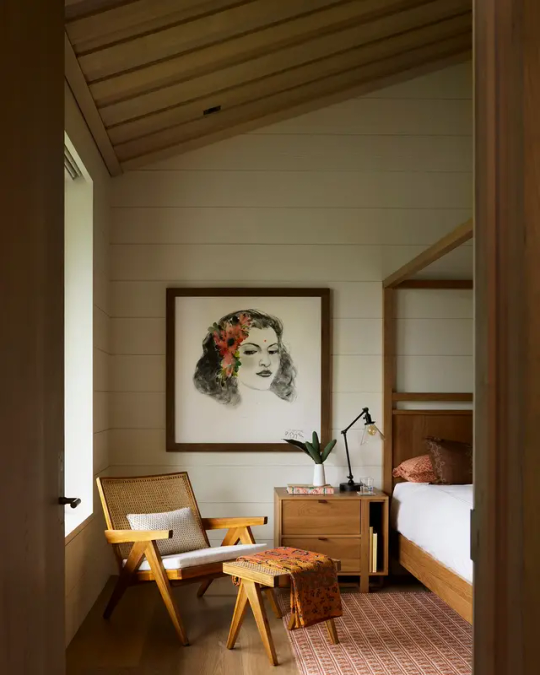
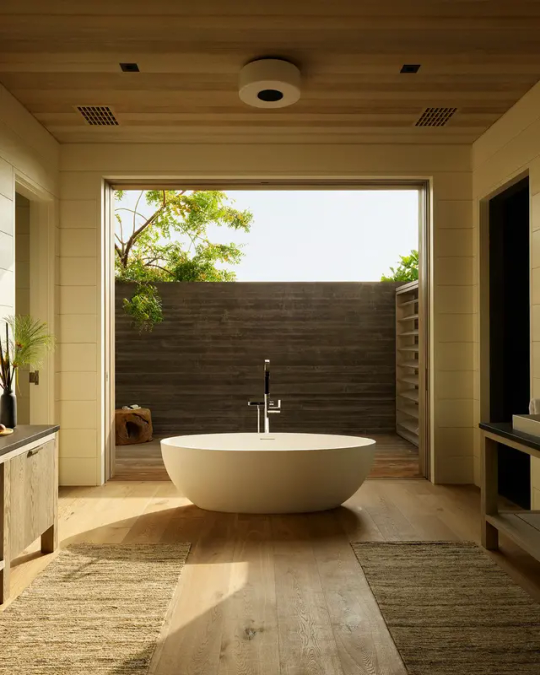
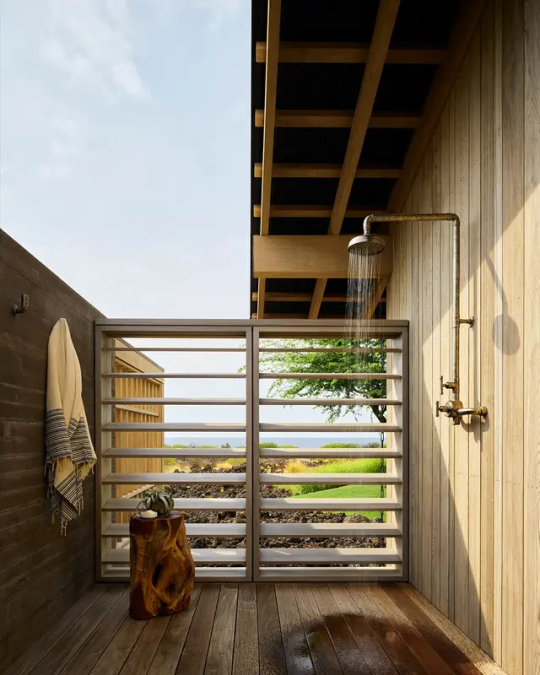
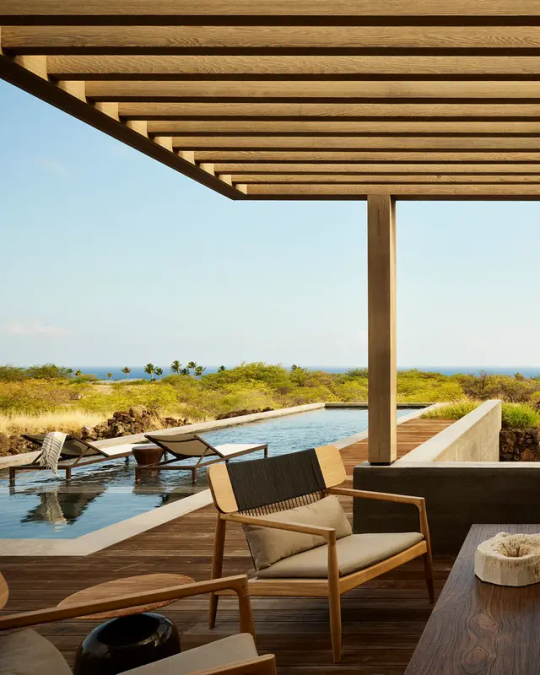
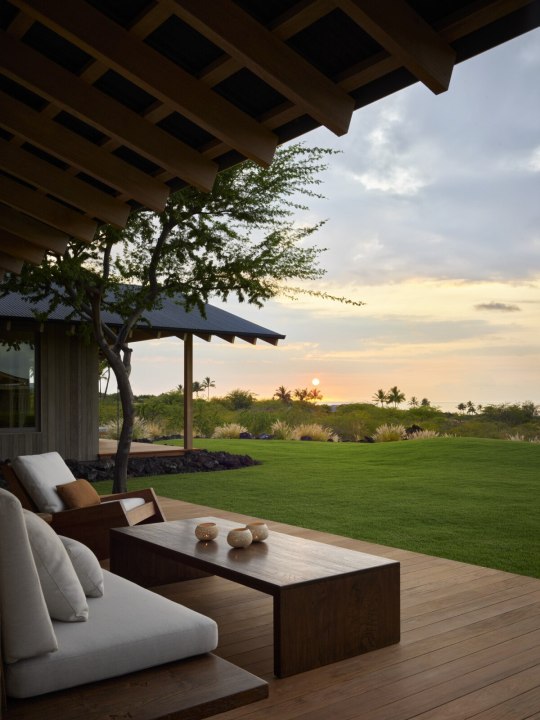

Hale Kiawe, Kailua-Kona, Hawaii, United States,
Walker Warner Architects
#art#design#architecture#luxury house#luxury home#millwork#summer house#summerhome#hawaii#hale kiawe#kailua-kona#united states#luxury lifestyle#beach house#landscaping#walker warner
168 notes
·
View notes
Text
Maintenance Matters: What Hawaiian Drivers Need to Know About Electric and Gasoline Cars

Hawaii’s breathtaking landscapes and unique climate present distinct challenges for vehicle maintenance. Whether you’re driving a cutting-edge electric car (EV) or a trusty gasoline vehicle, knowing how to care for your car is essential for a smooth and safe experience. At City Auto Sales Hawaii, we’ve guided countless customers in choosing and maintaining their vehicles. From cars for sale in Honolulu to used Car Dealer, we’re here to help.
Maintenance for Electric Vehicles
Electric vehicles like the Tesla Model 3 and Hyundai Kona EV are designed with simplicity in mind, requiring less maintenance than traditional gasoline cars. Without a combustion engine, there’s no need for oil changes, spark plug replacements, or exhaust system repairs. This translates to fewer trips to the mechanic, saving time and money.
Brake pads in EVs also last longer due to regenerative braking, which converts energy lost during braking into power for the battery. However, Hawaiian drivers must stay vigilant about battery health. Regular software updates and occasional checks on charging capacity ensure EVs like the Chevrolet Bolt remain efficient and reliable.
Salt air in coastal areas, common across Hawaii, can affect EV charging ports and connections. Drivers in regions like Kailua should clean charging ports periodically to prevent corrosion, especially if they live near the beach.
Maintenance for Gasoline Cars
Gasoline cars like the Toyota and Honda CR-V require more frequent attention but remain practical for many Hawaiian drivers. Routine oil changes, filter replacements, and brake maintenance are essential to keep these vehicles running smoothly. For adventurous drivers tackling rugged terrain on the Big Island, suspension checks and tire rotations are also vital.
Heat and humidity in Hawaii can take a toll on gasoline engines and cooling systems. Regular coolant flushes prevent overheating, while inspections of belts and hoses reduce the risk of breakdowns. Vehicles like the Ford Explorer, often used for family trips, benefit greatly from proactive maintenance schedules.
Environmental Considerations
Hawaiian weather, while beautiful, presents unique challenges for both EVs and gasoline cars. The island’s salty air, high humidity, and volcanic ash can accelerate wear on components. EVs like the 2023 NISSAN ALTIMA and gasoline cars like the Toyota Highlander both need extra attention to prevent rust and corrosion.
Drivers should rinse their vehicles regularly, especially after driving along coastal roads. Using protective coatings on the undercarriage and paint can help extend the life of any car, whether it’s powered by electricity or gasoline.
Why Choose Us
Expert Knowledge: Our team understands Hawaii’s unique climate and provides maintenance advice tailored to local conditions.
Diverse Selection: From EVs like the Tesla Model Y to gasoline cars like the Toyota Camry, we offer options for every need.
Thorough Inspections: Every vehicle is carefully inspected to ensure reliability on Hawaii’s roads.
Flexible Financing: We provide financing options for both new and used vehicles, making ownership simple.
Transparent Pricing: No surprises—just honest pricing on all our vehicles and services.
Convenient Location: Located in Honolulu, we’re accessible to customers across Oahu, simplifying car maintenance and buying.
Frequently Asked Questions
Are EVs easier to maintain in Kapolei?Yes, EVs like the Hyundai Kona EV have fewer moving parts and require less frequent servicing than gasoline cars.
What’s the best used SUV for sale in Honolulu for families?The Toyota Highlander is a reliable gasoline option, while the Chevrolet Bolt EUV offers an eco-friendly alternative for smaller families.
How often should I check my car for rust in Kailua?Drivers in coastal areas should inspect their vehicles monthly and rinse off salt residue to prevent rust.
Do gasoline cars handle mountain roads near Waipahu better than EVs?Gasoline cars like the Ford Explorer excel in rugged conditions, but EVs with high torque, such as the Tesla Model 3, also perform well.
Can I reduce maintenance costs for an EV in Pearl City?Yes, keeping software updated and scheduling periodic battery health checks ensure long-term savings for EV owners.
Where can I find a reliable used car dealer in Honolulu?At City Auto Sales Hawaii, we offer a wide range of reliable vehicles, from EVs like the Tesla Model Y to gasoline models like the Toyota Tacoma.
The Right Maintenance for the Right Vehicle
Caring for your car doesn’t have to be complicated. With the right approach, whether you drive an EV or a gasoline car, you can ensure a safe, efficient, and enjoyable ride. At City Auto Sales Hawaii, we’re committed to helping you find and maintain your ideal vehicle. From cars for sale in Honolulu to expert advice on care, we’re your trusted partner.
Visit us at 609 Ahua St, Honolulu, HI 96819, or call us at +1 808-888-2076. Let us help you keep your car in perfect shape, wherever your Hawaiian adventures take you!
1 note
·
View note
Text
Best Hawaii Beach Resorts:
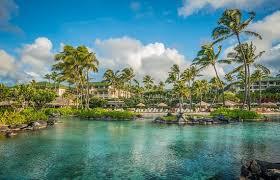
Hawaii, known for its stunning beaches, lush landscapes, and vibrant culture, is home to some of the world's most luxurious and picturesque beach resorts. Whether you're seeking a romantic getaway, a family vacation, or an adventure-filled escape, Hawaii's beach resorts offer something for everyone. Here are some of the best Hawaii beach resorts to consider for your next island vacation:
1. Wyndham Bali Hai Villas Hawaii.
Wyndham Bali Hai Villas Hawaii truly captures the splendor of the Garden Island. Princeville and the neighboring town of Hanalei offers an abundance of restaurants, beaches, galleries, boutiques and challenging golf courses all within a short drive.
Kauai and exceptional golf are one and the same
Enjoy windsurfing and stunning coral reefs at Anini Bay. Just across from Ha‘ena State Park is Manini-holo Dry Cave … relish that eerie feeling as you step inside and watch the last rays of sunlight disappear behind you. From working sugar plantations to cultural/historic journeys to soaring helicopter views, Kauai is best savored in a myriad of ways. Request a custom quote on a Kauai vacation villa today.
2. Wyndham Ka Eo Kai Kauai.
Wyndham Ka Eo Kai Kauai, the first resort situated just past the Princeville entrance, perfectly captures the ambiance of the “Garden Island” while offering a variety of water, golf, and tennis pleasures. Enjoy beautiful views from every unit, exotic surroundings that pay tribute to Kauai’s environment, picturesque pools, intimate nature trails, clubhouse activities and a golf lover’s dream spot between the number 3 fairway of the Makai Golf Course and Princeville’s historic tree lane.
Stroll along sandy shores, plant your toes in the sand and enjoy the ocean views. Tour the wondrous Na Pali coastline by boat. Waimea Canyon is spectacular, whether you prefer to hike it, stroll to the valley floor or just gaze from afar. You’ll find great bird watching, rich Kauai history and many fellow visitors at popular Kilauea Lighthouse, built in 1913. See legendary “wet caves” built by volcano goddess Pele … then step into the pitchblack Manini-holo Dry Cave. Flashlights are allowed! Request a custom quote for this Kauai resort rental.
3. Wyndham Kauai Beach Villas
Wyndham Kauai Beach Villas, located just a few minutes from Kauai’s main airport and just north of Lihue, the island’s largest city, sits right on the magnificent “Coconut Coast” shoreline. Enjoy the privacy of our beachfront resort, while being minutes away from world-class golf, fine dining, quaint towns, and sightseeing pleasures. It’s a vacation designed to delight the most discriminating traveler.
Simply step outside, plant your toes in the sand and take in the salty breezes and ocean views. Tee off next door at Wailua Golf Course with very reasonable greens fees. Nearby towns are charmingly rustic. Wander or do some serious shopping: you’ll find original island apparel, souvenirs and more. Enjoy the fare at a cozy pub, dine in four-star splendor or explore local eateries famous for good food in big portions. Many gorgeous Kauai beaches will tempt you, but Poipu (20 minutes away) has the best year-round weather. Nurture your cultural appetite with Hawaiian artifacts/art and contemporary works at Kauai Museum.
4. Wyndham Kona Hawaiian Resort
Wyndham Kona Hawaiian Resort is a picturesque retreat on Hawaii's Big Island, offering spacious, plantation-style villas with modern amenities. Nestled in lush tropical gardens, the resort provides a serene atmosphere with stunning ocean views. Guests can enjoy two outdoor pools, hot tubs, and a fitness center. Located near Kailua-Kona, the resort is close to historic sites, beautiful beaches, and vibrant local dining and shopping options, making it an ideal destination for relaxation and adventure.
5. Wyndham Makai Club
A Golf Paradise off the Beaten Path. You won’t find a cozier setting for a romantic or family vacation than the secluded Makai Club, sloped on a gentle hillside along the 27-hole Makai Golf Course in renowned Princeville. Find high-energy fun playing championship golf, splashing poolside, participating in organized resort events and exploring sightseeing pleasures. Or just bask in Kauai’s breathtaking island beauty, completely shrouded from the outside world by towering Norfolk Pines and lush tropical foliage.
Stroll along sandy shores, plant your toes in the sand and enjoy the ocean views. Princeville offers you fine dining, beaches, galleries and boutiques. Tee off on your choice of two courses Enjoy sunset sails and cocktails on the breathtaking Na Pali coastline; visit December through March and you might see humpback whales. Don’t miss Waimea Canyon, the largest canyon in the Pacific, carved thousands of years ago. The perfect photo opportunity is waiting at the famous Waikapala‘e and Waikanaloa caves — both right off the main highway. Then soar high above ocean and mountain terrain by helicopter … a top Kauai visitor draw.
Conclusion
Hawaii's beach resorts provide a perfect blend of luxury, natural beauty, and Hawaiian culture. Whether you choose the secluded beaches of the Big Island, the lush landscapes of Kauai, the vibrant energy of Oahu, or the pristine shores of Maui, each resort offers a unique and unforgettable experience. From world-class amenities and fine dining to outdoor adventures and cultural activities, these resorts ensure a memorable and relaxing Hawaiian getaway.
For more information click here: Best Hawaii Beach Resorts
1 note
·
View note
Photo

Landscape (Hawaii)
#Design ideas for a mid-sized tropical shade backyard concrete paver landscaping in spring. beautiful landscape#tropical lights#kailua kona home staging#kailua kona#outdoor eclectic#asian outdoor
0 notes
Text
Best Kayak fishing sport in world
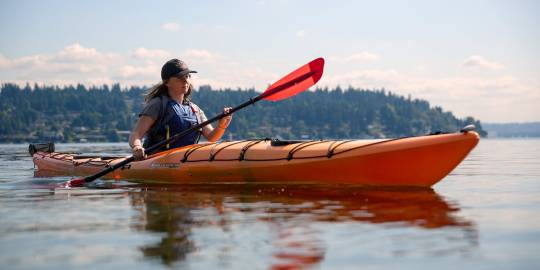
Pi-AS BAY, PANAMA
If you want to enjoy in the winters and in need to experience a high class getaway, then this place is a fantastic one. Here both type of fish, big as well as small fish are available. Small ones you can catch near the shore and big ones of course out in the sea especially the Blue Marlin and Sailfish. Apart from fishing, there a lot number of hotels and bars to attract more and more tourists. So, Panama is a great place to visit for sure.
2) Colorado River
The Colorado river , or the Rio Colorado, in Costa Rican is a distributory of the San Juan River which flows 96 km (60 mi) towards the Caribbean in the northern parts of Heredia and Limón Provinces. The surrounding habitats are protected as part of the second largest rain forest preserve in the country, the Barra del Colorado Wildlife Refuge.
The river is a well known tourist destination, particularly for fishing for tarpon and snook The Colorado River is considered one of the best places in the world to catch Atlantic tarpon
This location for fishing is the most popular one in South America. The beautiful river of Costa Rica is not all to be missed. Suitable in the summer weather, this area is worth remembering especially in case of fish fights. It is literally like a tug of war kind of experience while catching fish here. The Rio Colorado Lodge is a resort that remains open for tourist for the whole year. So, an adventurous story is on the cards people
3) Hatteras Island
Hatteras island , reconnect with family and friends, and yourself, through a variety of recreation. For example, you can fish right from the beach or take a charter boat out to the deep blue water of the Gulf Stream. Learn to harness the wind on a kiteboard or take lessons in leisure on paddleboards with your crew. There's little in the way of franchises and fast food but don’t confuse “doing without” with “going without.” Instead, think of soulful coastal restaurants and interesting mom-and-pop shops. While your setting will be a bit more on the untamed side of nature, accommodations are as modest or modern as you like. The beauty of Hatteras is that you can easily reach all the other OBX hotspots, but call a simpler and quieter part of the barrier islands your home away from home.
https://kayakfishinsider.com/ highlights winter on Hatteras Island, with businesses that are open and activities that are occurring during this special season.
Hatteras fishing is serious business especially for the anglers. People visit this place for other reasons like beach fun and shopping but the fishing feature attracts them the most. This location is famous for off shore fishing. This location is most suitable in winters between November and December. It is considered one of the best fishing spots on the Atlantic Coast and is famous for Yellow fin Tuna and Mahi Mahi. The weather condition is the perfect out here to make your trip even more satisfying and successful. You just have to charter a boat and you are ready to get an amazing off shore fishing experience. The fish is caught here with lures and chunks by flying-fishing technique which is very fascinating to watch out for.
4) Lizard Island
Lizard island is situated in Australia's which is most exclusive destinations. Lizard Island is situated 132 nautical miles in north west of Cairns Queensland. The island covers an area of 1013 hectares and is surrounded by some of the most beautiful and pristine reefs in the world. These reefs are absolutely teeming with marine life - several species of clown fish, green turtles, giant clams, rays, amazing coral formations and hundreds of species of colorful tropical fish await you at Lizard Island. Lizard Island boasts 23 pure white beaches. Lizard Island is the ultimate remote Great Barrier Reef experience. For those wanting to visit the Great Barrier Reef in Australia - it does not get any better than Lizard Island. LIZARD ISLAND HISTORY Lizard Island holds great historical significance concerning both Aboriginals and Europeans. Ltd James Cook, along with Sir Joseph Banks, named the island 'Lizard Island' after discovering many large sand monitors upon their first visit to the island. Just over 100 years later the island was inhabited by beache-de-mer fisherman. Watson's Bay on Lizard Island is named after one of these fisherman. The story of the escape of Watson's wife through the Great Barrier Reef from Lizard Island while sitting inside the cut-down boiler from a sunken ship has become one the most prominent tales of folklore from the pioneering era of Australia's history. Lizard Island in Australia is a very different or you may say kind of unusual Island. It is quite accessible for the tourist to reach the Island as the flights to this place are connected to all airports in Australia. This is the best fishing location especially in the season of September to December. The fish found here is the Black Marlin and you need to change your style of fishing for these local gliders. The island is situated on The Great Barrier Reef. It is quite an unforgettable holiday destination due to its fishing, beautiful view and luxurious resorts. All in one package deal! So, if you are a professional fisherman or a first timer, the fishing experience at the Lizard Island will make your day worth remembering.
5) Martha's Vineyard,
. Martha, vineyard has one of the best fishing spots since 70 years from now. You need to explore the natural beauty of the Island. This location is famous for plentiful of fully grown Striped Bass, Bluefish, and False Albacore and also known as one of the best fishing spots. Mostly medium sized fish are find here a Massachusetts island, sits in the Atlantic just south of Cape Cod. A longtime New England summer colony, it encompasses harbor towns and lighthouses, sandy beaches and farmland. It's accessible only by boat or air. Vineyard Haven, on the eastern end, is a ferry port and the island's commercial center. Oak Bluffs has Carpenter Gothic cottages and an iconic carousel of fully grown Striped Bass, Bluefish, Boneto and False Albacore and also known as one of the best fishing spots. Mostly medium sized fish are find here. It is situates in middle of the migratory route and natural bait is massive here which is the favorite food of fish. Experienced fisherman and the locals out there mostly use casting poppers and parachute jigs to get an amazing experience of fishing.
6) Kailua-Kona
Is a town on the west coast of Hawaii Island . Hulihee Palace is a former royal vacation from the 1800s, is Hawaii’s oldest Christian church. On Kailua Bay, reconstructed that ched houses at Kamakahonu National Historic Landmark mark King Kamehameha Is residence. Colorful coral lies off Kamakahonu Beach. Kailua Pier has boat moorings If you are planning a trip to Hawaii in the coming summers, then you got to visit this amazing fishing spot. Hawaii is the world’s top deep sea fishing destination and it is the capital of sports fishing as well. It is surrounded by five huge sized mountains. Here you will find a wide variety of fish like Tuna, Marlin, Wahoo and many more. .Apart from this you can find the amazing Pacific Blue fish weighing around 300 pounds approximately. Fishing across the sea is in itself an marvelous thing to explore.
7) EAST CAPE-BAJA,MEXICO
The East Cape Region extends from several miles east of San Jose del Cabo along the Sea of Cortez, to north of Punta Pescadero, Los Barriles and Rancho Buena Vista. All are names long popular with fly-in fishing diehards; but perhaps not so familiar to many others. That’s changing as more people discover this region where quiet hideaway hotels coexist with new restaurantsThe Real Baja”, is a terribly bumpy dirt road that runs for about 50 miles along the Sea of Cortez coastline. Blue and black marlin are plentiful from June to December, and the area explodes as the fishing resort crowd moves in. Roosterfish, yellowtail, wahoo and tuna are also abundant. Whatever your expectations, rest assured, there are miles of isolated coastline, pristine waters and an ample array of sports and activities for every taste, from diving to boardsailing. It remains popular for almost the whole year but the peak time is from May to November. Marlins found here are really huge in size and shape nearly around or more than 1000 pounds. This is a very affordable destination to visit which can turn out to be very productive, fun and rewarding as well
Kailua
, also known by its post office designation Kailua-Konato differentiate it from Kailua located on the windward side of Oʻahu island, and sometimes referred to as Kona in everyday speech, is an unincorporated city (Census Designated Place) in Hawai County, Hawaii, United States
8) Betty Lake and Bob Lake
are accessible from the Hessie Trailhead in the Indian Peaks Wilderness. The lakes are located half a mile apart in the open tundra of an isolated offshoot in a gorgeous alpine valley. Visitors will enjoy light crowds and pristine landscapes on the hike to Betty and Bob lakes: Betty Lake is located just 9 miles away from Netherlands which is quite near. It is one of the best fishing locations in the whole of United States of America. You may find here a wide variety of cutthroat Trout which means there are full chances to get a bite! It is situated at the beautiful landscape of Indian Peaks Wilderness. It is basically a kind of hilly area with mountains and trees and shrubs all around. Suitable weather is mainly between June and July.
9) Chalk streams
are rivers that rise from springs in landscapes with chalk bedrock. Since chalk is permeable, water percolates easily through the ground to the water table and chalk streams therefore receive little surface runoff. As a result, the water in the streams contains little organic matter and sediment and is generally very clear. The beds of the rivers are generally composed of clean, compacted gravel and flints, which are good spawning areas for Salmonidae fish species Fish found here is the famous Trout which is available plentiful here. Spring season is the best season to go for fishing in this area and it is totally within your budget. So, if you want a beautiful fishing experience then it’s a must visit.
10) JEROME LAKE, ALASKA
It is also called Fair man Lake .At this fishing location you will find the Trout fish in large numbers. The view of this location is breathtaking and of course very photogenic. The late fall season is the most suitable for fishing here as it is the migration time. So, get your fishing rods and reel ready to catch Trout fish as many as you can.
11) Montauk, New York
Montauk is a village at the east end of the Long Island peninsula. It’s known for its beaches, like Ditch Plains, with its strong Atlantic surf. At the peninsula’s tip, Montauk Point State Park is home to the 1796 Montauk Point Lighthouse. A museum in the keeper’s house displays historical documents signed by George Washington. Camp Hero State Park, once a military base, has WWII bunkers and a radar tower. Fishermen generally find smaller fish here as their fins get rub by the sandy shores of Montauk but these also weigh more than 40-50 pounds.
12) ASCENSION BAY, MEXICO
It is a long established fact that for fly fishing, Ascension Bay, Mexico, is the number one fly fishing destination in the world for catching Permit on the fly: moot point, done deal Going further, did you know that Ascension Bay, Mexico, has an incredible, The months are from February to June, you will find here Bonefish, Tarpon and Permit. Fishermen who love the flat angle style, this spot will give you the best experience by using the famous flying-fish technique. Due to excessive or plenty of water, you got to get some dry clothes with you. Fisherman Lodge is situated in an international wildlife park and UN Heritage Site; known as the Sian Ka'an National Park that spans some 1,300,000 acres of prime inflatable fishing flats. Ascension Bay is ranked as one of the finest fly fishing locations in the world and offers outstanding fly fishing opportunities; in its pristine flat; and mangrove-lined shores with a backdrop of the lush green rainforest.
2 notes
·
View notes
Text
Makani’ Eka, The Big Island Hawaii
Makani’ Eka, The Big Island Architecture Development, Hawaii Retreat Property, Luxury House Photos
Makani’ Eka on The Big Island, Hawaii
8 Feb, 2021
Makani’ Eka Retreat
Design: Walker Warner Architects
Location: The Big Island, Hawaii, Central Pacific, United States of America
Makani’ Eka is set atop a hardened lava flow with views of sky, sun, and water, this family compound strikes a balance between modernity and tradition. Old and new ebb and flow through a simple composition of small structures linked by a lush courtyard and a series of walkways and patios. Composed of four independent structures, including a cedar-clad main living pod, the siting balances the desire to host friends and family as well as privacy.
Architecture and interiors are modern yet rely heavily on traditional materials and touchstones. “We think of it as a village,” notes Greg Warner, of the arrangement, a grouping of four separate structures. The home is built to rest gently in the landscape but also to last for generations. “We execute enduring archi¬tecture—in the sense of material quality but also livability,” Warner says. “We have high hopes for the legacy of this project.”
Traditional Hawaiian villages, typically organized in loose clusters, inspired both 1.5-acre site plan and the architectural style. The composition of canted steel columns, steep-pitched roofs, and rhomboidal window and door openings “represent a contemporary interpretation of early Hawaiian hale shelters,” Warner says. “They’re like modernist lean-tos.” The compound is surrounded by a field of lava and native grasses.
The main living pod is pushed to the edge of the sea, while the supporting structures, containing the two guest suites and communal relaxation areas, are set back, deeper in the property. Guest suite bedrooms open onto concrete-walled private courts for additional seclusion. The arrangement assumes that the three-bedroom residence feel expansive and take advantage of the views.
The structures housing the master suite and the main living areas are located on the site’s ocean side. Set back deeper in the property are pods containing the two guest suites and communal relaxation areas. Bedrooms open onto concrete-walled private courts for additional seclusion. Interiors encompass approximately 4,800 square feet, but the arrangement makes the three-bedroom residence feel expansive.
The use of heavily mortared lava rock was inspired by the historic Mokuaikaua Church, located in nearby Kailua. Windows are framed in stained sapele mahogany. Western red cedar serves as the dominant wood—both for cladding and the roof shingles—since it resists heat, moisture, and insects. Inside, stained and lightly polished concrete flooring keeps things cool during the day.
Inside spaces flow seamlessly to outside. Sapele-framed sliders glide open to the elements, and operable windows swivel to coax in the breeze and encourage cross ventilation. “The living room unfurls to become porch-like,” Warner adds, noting the continuity of floor and ceiling materials between interiors and adjacent alfresco spaces. The degree of openness led Marion Philpotts-Miller of Philpotts Interiors to favor “indestructible” solution-dyed acrylic upholstery for much of the casual furniture.
A Lee Kelly oil on canvas animates the living room’s assemblage of Christian Liaigre furnishings, including an oak lamp and sofa and wenge lounge chairs; the ceiling slats are bleached Douglas fir. The kitchen’s island and table are topped in honed Cararra marble. Custom surfboards—one hand-painted, the other crafted of paulownia—hang above the rec room’s Eero Saarinen table.
Philpotts-Miller sought to capture the “adventurous nature” of the clients. “The use of color is very playful and dynamic,” she says. In the rec room, for instance, custom surfboards are mounted on the wall like artworks. A koi pond is the focal point of the courtyard between the main living and master suite pods. The scheme is no-frills, simple, and airy, with a midcentury vibe that Philpotts-Miller explains was inspired by the work of Hawaiian modernist Vladimir Ossipoff. “Because the architecture is so thoughtfully put together and there’s so much natural texture, we didn’t need to load up the interiors,” Philpotts-Miller continues.
The master bedroom is likewise grounded with earthy, timber-toned accents—whitewashed wood wall paneling, a walnut bench—and also lifted via a sky-blue rug and throw pillows. The master bedroom’s bench is walnut. Concrete walls and cedar slats enclose the custom cast-concrete tub standing in the courtyard off the master bathroom. Flooring in the master bathroom and throughout is polished, stained concrete. A niche in the master bedroom features a chair by Naoto Fukasawa. The master suite’s study culminates in a sitting area with a Charles and Ray Eames lounger offering Maui views.
Makani’ Eka, The Big Island Hawaii – Building Information
Design Team: Walker Warner Architects Principal: Greg Warner, Principal, AIA, LEED AP Senior Project Manager, Architect: David Shutt Project team: Rob Campodonico, Anja Hämäläinen, Boyce Postma, Rina Wiedenhoeft
Project team Walker Warner Architects: Architecture Philpotts Interiors: Interiors David Y. Tamura Associates: Landscaping Consultant Lighting & Engineering Integrated: Lighting Consultant Hayes Structural Design: Structural Engineer Mark Morrison Mechanical Engineering: M/E/P Kona Wai Engineering LLC: Civil Engineer Arc Wood & Timbers; Na Kalai La’au Woodshop: Woodwork Oakes Management: General Contractor
Key Materials Exterior siding: Western Red Cedar, very light resawn; Lava Rock, lime putty Ceiling: Douglas fir, bleached and dyed Steel (AESS): Exposed steel, painted black Roof: Western Red Cedar shingles Roof decking: Douglas fir, resawn, dark stained Stone: Lava Stone, lime putty Countertops: Carrera Marble, honed; Basaltina, honed and filled Cabinetry and millwork: Poplar, painted Western Red Cedar, stained Interior Paint: Navajo White (Benjamin Moore) Exterior doors: Sapele Mahogany, stained (Quantum and Tradewind) Interior doors: Sapele Mahogany, stained (Western Pacific Building Materials) Door hardware: Sun Valley Bronze Windows: Sapele Mahogany, stained (Quantum and Caoba Doors) Floors: Concrete, stained and lightly polished Concrete walls: Panel formed, poured in place Firepit: Lava stone, custom
Products/Materials Patio: Dining Chairs, Kettal Study: Chair, Herman Miller through Design With¬in Reach Kitchen: Table, Chairs, Stools, McGuire; Perennials: Chair Fabric. Flexform: Pendant Fixture. Living Room: Christian Liaigre: Sofa, Lounge Chairs, Table Lamp; Glant Textiles: Sofa Fabric. Raoul Textiles: Sofa Pillow Fabric, Lounge Chair Back Fabric. Poltrona Frau: Armchairs. Mike Riley Woodworks: Custom Coffee Table. De Sousa Hughes: Custom Bench. Nobilis: Bench Cushion Fabric. Indich Collection: Custom Rug. Master Bedroom: Kona Coast Upholstery: Custom Headboard Panel. Per¬ennials: Headboard Fabric. Jim Thompson: Bed Throw Fabric, Pillow Fabric. Madeline Weinrib: Rug. Nido Living: Bench, Side Table. Through Design Within Reach: Sconce. B&B Italia: Chair. Victoria Morris Pottery: Custom Lamp. Rec Room: Knoll: Table. Through Design Within Reach: Dining Chairs. Dedon: Rocking Chairs, Ottoman. Hess Surfboards: Custom Surf¬boards. Chilewich: Rug. Nido Living: Side Table. Bathroom: Concrete Works: Tub. Nido Living: Side Table. Sonneman—A Way Of Light: Sconces. Guest Bed¬room: Herman Miller: Benches. Jim Thompson: Pillow Fabric. Design Within Reach: Floor Lamp, Sconces. Galbraith & Paul: Pillow Fabric. Rosemary Hallgarten: Custom Covers. Anthropologie: Chair. Tucker Robbins: Side Table. Throughout: Sun Valley Bronze: Door Hard¬ware. Benjamin Moore & Co.: Paint. Maui Custom Woodworks: Custom Beds.
Photography: Matthew Millman
Makani’ Eka, The Big Island Hawaii images / information received 080221
Location: Kauai, Hawaii, Central Pacific, USA
New Hawaii Buildings
Contemporary Hawaii Architectural Projects
Hawaii Architecture Designs – chronological list
A recent Hawaii house on e-architect:
Clifftop House Maui Design: dekleva gregorič arhitekti photo © Cristobal Palma Contemporary House in Hawaii
Another Hawaii property on e-architect:
New Residence in Hawaii Design: Belzberg Architects photographs : Benny Chan (Fotoworks), Belzberg Architects Kona Residence
Barack Obama Presidential Center in Hawaii
Tommy Bahama Honolulu Restaurant in Waikiki
Hawaii Buildings
American Houses
New Houses
American Architecture
American Architect
Photos for the Makani’ Eka, The Big Island Hawaii page welcome
Website: The Big Island, Hawaii
The post Makani’ Eka, The Big Island Hawaii appeared first on e-architect.
0 notes
Photo

House Hawaii 💡Author: Olson Kundig 📍Location: Kailua-Kona, USA 📅 Built in: 2011 📸 Benjamin Benschneider Our focus is to feature outstanding examples of architecture that consider materiality and are connected with nature and interesting landscapes. Stay tuned for unique examples that will inspire you! 🌐Enter the community Follow @officialherbyonline . www.herbyonline.com . Like and share our content. . [tag someone who loves architecture] . #architecture #herbyonline #entrepreneur #architecturephotography #architectural #design #interiordesign #minimalism #architettura #urbandesign #contemporary #British #AmericanArchitecture #finesocial #fineinteriors #finearchitecture #interiors #decoration #luxury #homedecor #art #decor #inspiration #interiordecorating #furniture #mansion #home #house #uk #usa https://www.instagram.com/p/B5NfwbrFRzj/?igshid=10zuege6ucc90
#architecture#herbyonline#entrepreneur#architecturephotography#architectural#design#interiordesign#minimalism#architettura#urbandesign#contemporary#british#americanarchitecture#finesocial#fineinteriors#finearchitecture#interiors#decoration#luxury#homedecor#art#decor#inspiration#interiordecorating#furniture#mansion#home#house#uk#usa
0 notes
Text
Luxurious Hawaiian Timeshare Experiences

Experience Luxury with a Timeshare in Hawaii
Many of us spend a lifetime dreaming of tropical vacations on faraway beaches. Pineapple drink in hand, a tiny umbrella to top it off and hopping from one exciting adventure to another. Luckily, with a timeshare in Hawaii, these adventures can become a reality. If your dream vacay is best described as a sequence of unforgettable high-end fun, head to the Aloha state. These islands offer up a big dose of unique, luxurious Hawaiian vacations. You might not be able to see all of these incredible attractions in one trip, but they will spark your imagination for the use of your timeshare ownership.
On the Island of Oahu
Party on the Oceanfront at RumFire RumFire / 2255 Kalakaua Avenue. Honolulu, HI / (808) 922-4422
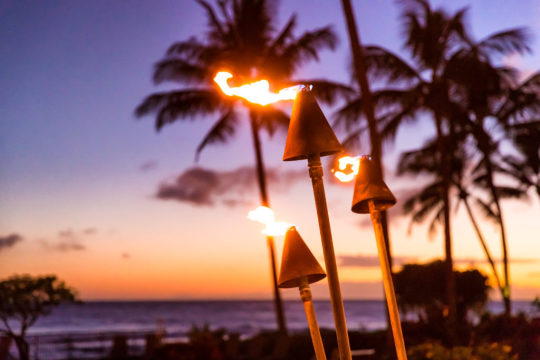
With a view of Diamond Head crater and the Pacific Ocean, RumFire has an upscale vibe that's sure to impress. Well-crafted cocktails and a delicious menu of tapas-style small plates make an island-themed selection of cuisines. Locals and tourists alike can find plenty of outdoor seating, complete with torches to round out the atmosphere. You’ll have a great view even from inside due to the abundance of floor-to-ceiling windows. Don’t leave without ordering a 1944 Mai-Tai (having it served in a pineapple is optional but highly recommended). Try the spiced lemongrass crispy wings to start off. Then, finish your meal with a decadent Truffle Burger served with truffle aioli, buchette cheese and local greens. Treat Yourself to Luxury Goods Luxury Row / 2100 Kalakaua Avenue / (808) 922-2246
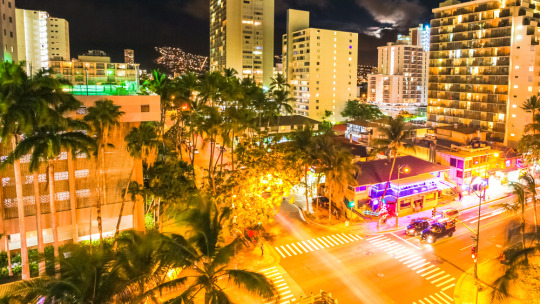
Imagine over 100,000 square feet of the world’s top fashion in one convenient building just blocks from the beach. Feast your eyes on the latest fashions from Bottega Veneta, Miu Miu, Saint Laurant, Gucci, Chanel and Moncler. Once you’ve spent the day shopping you can unwind at the fabulous eateries nearby. Hit up nearby Sushisho for intense sushi bites of the freshest catch or La Mer, the only restaurant in Hawaii to be awarded five stars by Forbes Travel Guide. Play A Round at the Ko'olau Golf Club Ko’olau Golf Club / 45-550 Kiona’ole Rd. / (808) 236-4653
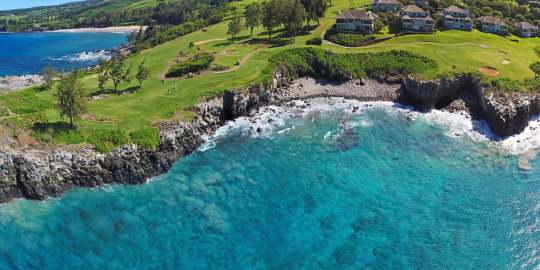
One of golf magazine’s top 100 places to golf, the Ko’olau Golf Club is a must-play for enthusiasts. A boasting 18-hole course and the brainchild of famed designer Dick Nugent, Ko’olau is one of Golf magazine’s top 100 places to play. Some of the tees of this court are on par to be the most difficult in the world. However, there are some easier tees as well. With a phenomenal backdrop featuring the Ko’olau mountain range, this golf club provides a tee-off that is unforgettable. Sail Along the Turquoise Seas on A Catamaran Royal Hawaiian Catamaran / 1125 Ala Moana Boulevard, HI 96814 / (808) 587-1849
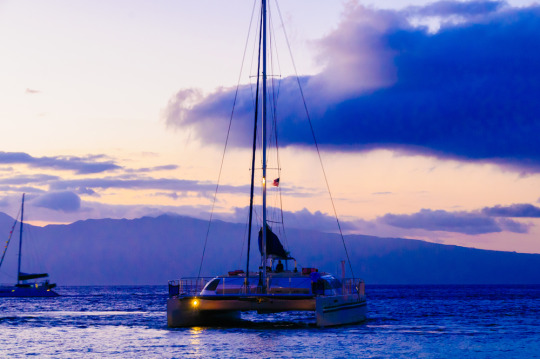
The Royal Hawaiian Catamaran’s signature vessel is a 52-foot luxury catamaran that seats 30 passengers. Relax as the experienced Captain Kelly Faulkner prepares the perfect itinerary unique to your occasion. An attentive assistant is present to cater to your every need, providing food and drinks during your sail. Commonly booked activities include sunset sails, snorkeling and private dinner cruises. For the splurge of a lifetime, book an overnight outing that travels from one island to another. It's a truly unforgettable and luxurious Hawaii vacation experience. Luxurious Timeshares on Oahu

Marriott's Ko Olina Beach Club There are a number of high-end, grandeur resorts on Oahu. Find solace at Hilton Grand Vacations Hokulani Waikiki, where spacious one-bedroom suites are minutes away from Waikiki Beach. Each suite comes with a fully-equipped kitchen, dining space and Juliet-style lanais. Or take a dip in one of six pools at HGV's Grand Waikikian resort, also complete with oceanfront views. Even Marriott has a beautiful resort right on the beach, the Ko Olina Beach Club.
On the Island of Kauai
See the Sea in Style Holo-Holo / 4353 Waialo Rd Suite 5A Eleele, HI 96705 / (808) 335-0815
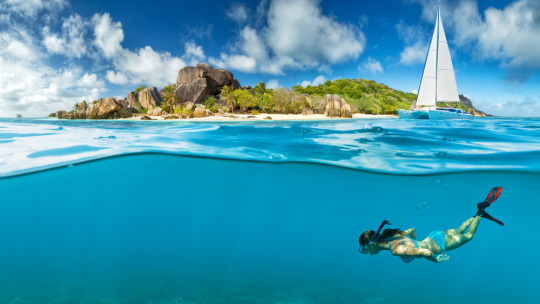
The Napali coast is famous for its 3,500-foot high cliffs that tower over the island. While it’s wonderful to hike these fantastic rock formations, imagine this dream-like landscape from the comfort of a 28-foot wide luxury catamaran, and get a chance for snorkeling as well. Throughout your sail, expect phenomenal hospitality and a full menu of culinary options. Choosing this adventure from November through March makes for a special treat: humpback whale sightings. Kauai Timeshares
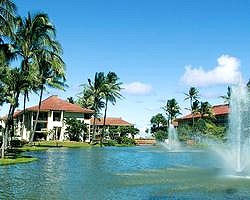
Wyndham Kauai Beach Villas A top-rated vacation resort, Marriott's Kauai Lagoons-Kalanipu'u hosts two and three-bedroom villas with comfortable accommodations. Each villa comes with a private balcony to enjoy the beautiful Kauai views. Another beachfront treasure, Wyndham Kauai Beach Villas are located just a hop and skip away from Kauai's main airport. These resorts bring guests into their luxurious Hawaiian vacation dreams.
On the Island of Maui
Indulge in an Interactive Dining Experience Maui Chef’s Table / 1670 Honoapi’ilani Hwy. Waikapu, HI 96793 / (808) 270-0333
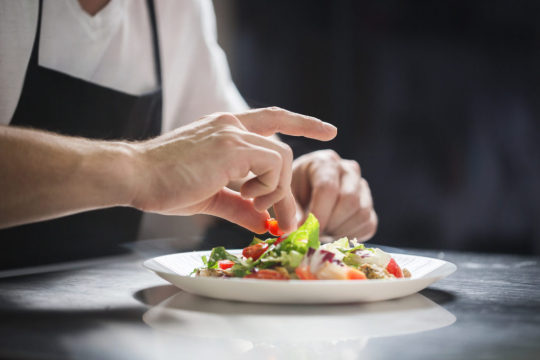
Part of partaking in luxurious Hawaiian vacation experiences is indulging all of your senses (taste included). For this purpose, Maui Chef’s Table won’t disappoint. The restaurant is known for providing an interactive dining experience. Guests can watch their meals being prepared as there is no separation between the kitchen and the dining room. The tasting menu is all about indulging your palate in unique combinations of island flavors and ingredients. One diner gave details of his amuse-bouche served by the chef. It consisted of a vanilla wafer topped with creme fraiche, microgreens and a fennel spread. On top of this was an incredible foie gras confit, cooked for 10 days in duck fat. It was then paired with a pickled Brazilian berry native to the Amazon, the jaboticaba. Cruise in A Classic Car Maui Roadsters / 122 Kio Loop, Bay #3, Kihei, Hi 96753 / 808-339-6204
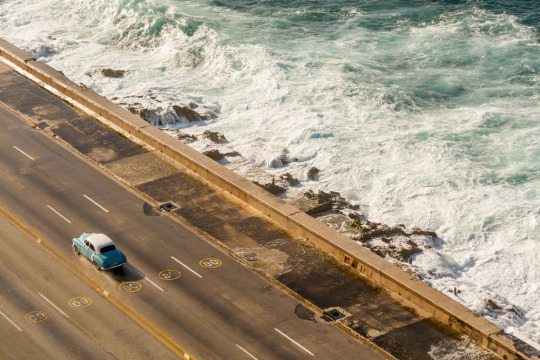
Car enthusiasts can live their very best life in some of the world's most iconic sportscars. There are plenty of car rental companies on Maui, but none that offer 1957 Porsche 356 Speedster Convertible. While these are reproductions, you can cruise in style in these fun vehicles for trips along Mau's coast. See Maui from the Sky Maui Helicopter Tours / 800-745-2583
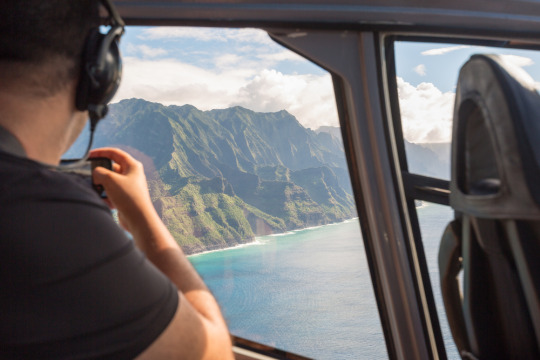
They say that some of the most unique sights in Hawaii can only be seen from the sky with a bird's eye view. The lush valleys of the West Maui Mountains to rugged shorelines, a helicopter ride will give you an exclusive look at Maui. Plunging waterfalls, the crater of Mt. Haleakala and rich rainforests are must-sees on a Hawaiian trip--why not go sky-high? Timeshare Resorts on Maui
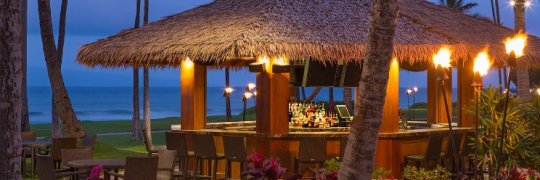
Hyatt's Ka'anapali Beach Poolside bars in man-made caves, an oceanfront spa and rooftop gazing completes the Hyatt Ka'anapali Beach Resort. The resort sprawls over 40 acres of oceanfront land. Private lanais and panoramic views give every guest gorgeous scenery from the privacy of their suites. The Westin Ka'anapali Ocean Resort Villas is another option through Vistana Signature Network. This resort is nestled between the West Maui Mountains and the Pacific Ocean. Along with expected vacation ownership amenities, guests will never have to leave this resort. Complete with a spa, restaurants and grocery store, Westin Ka'anapali Ocean Resort Villas are a complete luxurious Hawaiian vacation experience.
On the Big Island
Book A Private Dinner on the Beach Four Seasons Hualalai / 72-100 Ka’upulehu Kailua-Kona, Hawaii 96740 / (808) 325-8000
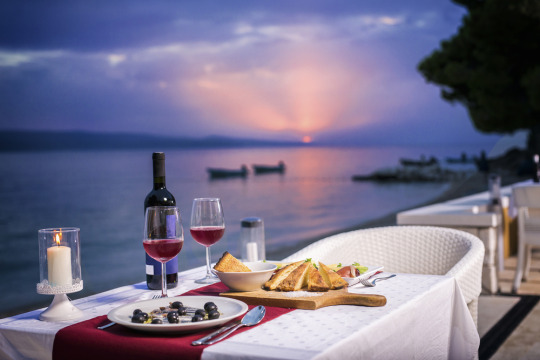
If a private dinner on the beach isn’t enough for a romantic night, you can also have your dinner accompanied by a local ukulele player and hula dancer. Starting at $1,000 for a four-course menu, the Four Seasons Hualalai offers the ultimate intimate dining experience. Complete with two glasses of Ruinart Rose Champagne, specially designed floral arrangements and a formal dining setup makes for an unforgettable evening. Even more opulent options include a dinner featuring a four-course customized dinner served with Veuve Clicquot Grande Dame Champagne. This menu is created just for you with the aid of a private chef consultation. For the whole menu of dinner enhancements you can add on to your spectacular night, check out the full information booklet. Enjoy A Cup of Real Kona Coffee Brewed by A Coffee Expert Daylight Mind Coffee Company / 75-5770 Ali’i Drive Kailua-Kona, Hawaii 96740 / (808) 339-7824

Run by coffee scientist and connoisseur Shawn Steiman, Daylight Coffee brews real Hawaiian-grown coffee from the islands. In addition to Maui and Oahu, some international varieties also come from Peru and Colombia. But there’s more to Daylight Coffee than incredible coffee perfected by science. The menu includes a full variety of brunch and lunch favorites, as well as cocktails. For a filling (but delicious) breakfast item, opt for the “Sam,” a hearty portion of meat-filled omelet topped with cheese, hollandaise and gravy, served with a side of rice and pancakes. Standout cocktails include the warmth-inducing Cascara Breeze, which blends vodka with cascara syrup and lemon, and the tropical margarita which comes in passionfruit or guava flavors. Luxury Timeshares on the Big Island
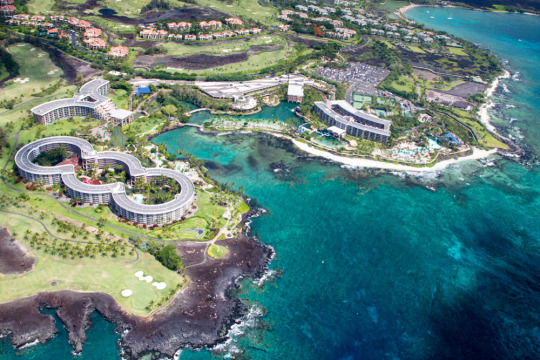
The largest island of Hawaii can't be complete without the best of the best luxury Hawaiian timeshare resorts. The Bay Club at Waikoloa Beach Resort offers a breath-taking experience for Hilton Grand Vacation Club owners. A Hawaiian haven, Bay Club sits between two champion golf courses on the Waiulua Bay. Two swimming pools, tennis courts and poolside cafe are available for all guests to indulge in. Read the full article
0 notes
Text
Win a chance to visit Hawaii, with Kona Brewing Company’s “Embrace Your Aloha”

Press Release
KAILUA-KONA, HI ... For over two decades, Kona Brewing Co. has been sharing the Aloha Spirit through its colorful and vibrant packaging that depicts iconic Hawaii adventures, such as canoeing through the breaking waves of Makaha Beach in Oahu, which inspired Kona’s Big Wave Golden Ale, to kite-surfing above the crystalline waters of the windy beach that inspired Kanaha Blonde Ale. Now, consumers will have the opportunity to embrace their Aloha Spirit and win a chance to step into some of the most beautiful destinations across Hawaii with Kona Brewing Company’s new enter-to-win sweepstakes, Embrace Your Aloha. From now through September 5, 2018, entrants can win a chance to experience an adventure featured on the label of four different Kona beers.
To enter the sweepstakes, fans can snap a pic with their favorite Kona beer as they embrace their Aloha and post the image to Instagram or Twitter with the hashtag #EmbraceYourAloha. From there fans will be directed to a website to complete their entry. One grand-prize winner will be chosen on or around September 10th, 2018, and receive a four-day, three-night all expense trip (including airfare) for two people to live the label of their favorite Kona brew in Hawaii.
“The spirit of the Islands runs deep through the core of Kona Brewing Company,” said Widaliz Quinones, brand manager, Kona Brewing Co. “Our labels depict iconic aspects of Hawaiian landscape and speak to the passion of the people living on the islands and what they love to do most. Offering fans the opportunity to experience this legacy firsthand extends the Aloha Spirit to the mainland and highlights Kona Brewing Company’s commitment to its humble local beginnings.”
The experience options are based on the vibrant and classic designs that Kona Brewing Co is known for and are representative of local passion points, can include:
- Longboard Island Lager: Longboarding on the rolling waves of Waikiki Beach in Oahu
- Hanalei Island IPA: Kayak the calm blue waters of Hanalei Bay in Kauai
- Kanaha Blonde Ale: High-speed kite-surfing above the waters of Kanaha Beach in Maui
- Big Wave Golden Ale: Take part in an outrigger canoe adventure off Makaha Beach in Oahu
To learn more about the Embrace Your Aloha sweepstakes, visit EmbraceYourAloha.com.
To learn more about Kona Brewing Company, visit konabrewingco.com, follow @konabrewingco on Twitter and Instagram and check out youtube.com/konabrewingco.
###
About Kona Brewing Co.
Kona Brewing Company was started in Kailua-Kona on the Island of Hawaii in the spring of 1994 by father and son team Cameron Healy and Spoon Khalsa, who had a dream to create fresh, local island brews made with spirit, passion and quality. Today, Kona is Hawaii’s largest and favorite craft brewery, known for top-selling flagship beers Longboard Island Lager and Big Wave Golden Ale and award-winning innovative small-batch beers available across the Islands. The Hawaii born and Hawaii-based craft brewery prides itself on brewing the freshest beer of exceptional quality closest to market. This helps to minimize its carbon footprint by reducing shipping of raw materials, finished beer and packaging materials. Kona Brewing Co. has become one of the top craft beer brands in the world, while remaining steadfastly committed to its home market through a strong focus on innovation, sustainability and community outreach. For more information call 808-334-BREW (2739) or visit www.KonaBrewingCo.com. Talk with us via Twitter and Instagram: @KonaBrewingCo
0 notes
Photo

Hawaiian colors #003 #hawaii #blue #sky #sun #palmtrees #colors #pantone #design #photography #graphicdesign #beach #landscape #paradise #kailua #bigisland (en Kailua-Kona, Hawaii)
#blue#bigisland#colors#sun#photography#kailua#sky#hawaii#003#palmtrees#design#pantone#paradise#graphicdesign#beach#landscape
2 notes
·
View notes
Text
#kailua-kona landscape design#installation and maintenance#kailua-kona#hawaii landscaping#landscaping design#landscaping services#kailua-kona lawn mowing services#kailua-kona landscaping services
0 notes
Photo



(via The Energy of Tomorrow May Not Be Solar, but Seaweed)
By Patrick Caughill
In Brief: The US Department of Energy has invested nearly $1.5 million in projects that will help establish large-scale seaweed farms for the purpose of making biofuel. The renewable energy sector is rapidly increasing in the diversity of clean energy sources.
Seaweed Energy
The U.S. Department of Energy is investing in a novel source of future renewable energy in the form of seaweed. That’s right — seaweed energy. The Honolulu Star-Advertiser reports that the DOE is investing nearly $1.5 million in two projects that will help develop seaweed farms and explore harvesting methods.
Seaweed, in all its slimy glory, can be processed into a biofuel that could be used to power our homes and vehicles. The DOE’s Advanced Research Projects Agency-Energy (ARPA-E) program is funding projects across the country to make the large-scale cultivation of seaweed a reality, supporting another alternative to fossil fuel use.
Of the two latest projects funded, $995,978 went to Makai Ocean Engineering of Honolulu to help build an ocean simulating model that the will aid researchers in designing offshore seaweed farms, and $500,000 went to Kampachi Farms of Kailua-Kona to test harvesting methods for seaweed grown on these farms. Kampachi Farms will also develop an offshore seaweed farm.
More Than Solar
Researchers are constantly perfecting renewable energy sources like wind, solar, tidal, among others to allow for greater accessibility. Innovators are looking at seaweed and far beyond to explore novel means of harvesting renewable energy.
A team of researchers from Fudan University in China has developed a power generator that will be able to convert blood flowing in your body into energy. The ability to use hydrogen as a fuel has also recently come back into focus with new ways to store hydrogen power and convert water, even seawater, into hydrogen fuel.
A fossil fuel free future is possible and each new technological discovery brings us closer to making that future a reality. Solar and wind power may have a large role to play in that clean energy landscape, but they will not be exclusive. Novel approaches like those listed above as well as many more that have been developed or are on their way could help to bridge gaps in coverage and lead to a true fossil fuel free planet.
[Entire post — click on the title link to read it at Futurism.]
0 notes
Text
THE COST OF THE COAST
BY ADAM MANDELMAN
Riding along the layered landscapes of Hawai‘i’s Kohala Coast.
FROM THE JULY 2017 ISSUE OF LANDSCAPE ARCHITECTURE MAGAZINE.
For a first-time visitor flying into Kona International Airport on Hawai‘i’s Big Island, a view out the airplane window can trigger deep regret. Nowhere to be seen are the state’s trademark emerald ridges and lush valleys. A barren desert of lava spreads to the horizons. Although this landscape, like most deserts, has its own otherworldly beauty, it’s not what most people expect from their Hawaiian vacation. Driving north from the airport to the island’s Kohala Coast resort region doesn’t improve the view, as sunburnt moonscape unfolds for mile after mile.
That a tourist yearning for tropical paradise would find herself in the middle of a vast and arid volcanic plain seems like a cruel joke. But a turn off the Queen Ka‘ahumanu Highway to any of the region’s resorts soon dispels those anxieties. The seemingly endless basalt yields to coconut palms and bougainvillea that, although sparse at first, anticipate the verdant golf courses and parklands ahead. The parched shrubs and wild goats that adorned the highway have been replaced with ropey banyan trees and groves of ginger, heliconia, and philodendron that shade sprawling water features alive with fish, turtles, and—at one resort hotel—even dolphins.
The extravagant oases that erupt from the lava promise tens of thousands of visitors each year a genuine Hawaiian vacation amid inhospitable desert. As striking a contrast as this phenomenon presents, even more arresting are the well-preserved traces of ancient Hawai‘i that persist throughout this landscape. Over more than 50 years, resort development along leeward Hawai‘i Island—as the Big Island is formally known—has steadily woven together shopping malls and petroglyph fields, towering water slides and crumbling Hawaiian temples, dolphin adventure pools and centuries-old fishponds. Simultaneously kitsch and extraordinary, this layered landscape of ancient and contemporary development embodies some of the deepest contradictions of tourism in Hawai‘i.
In 1819, the Frenchwoman Rose de Freycinet passed by the Kohala Coast while on a scientific world tour with her husband. “Nobody can ever have seen a more arid and dreadful aspect than this part of the island of Owighee,” she wrote in her journal. “There is not a tree, not the smallest part of a plant; one would say that fire had passed over it.”
The Mauna Kea Beach Hotel at Kauna‘oa Beach, c. 1965. Note Mauna Kea volcano in the background. Image courtesy of the Mauna Kea Beach Hotel Archive Collection.
Despite the region’s “arid and dreadful aspect,” Kohala’s port village of Kawaihae had served in the 18th and 19th centuries as an important royal residence and trading post. But by the late 1950s, the coast was almost deserted. European diseases had decimated the Native Hawaiian population, and the coast’s paltry average rainfall—less than 10 inches a year—had repelled the sugarcane, cattle herds, and countless other newcomers arriving on Hawaiian shores. In 1960, the Kohala Coast was home to maybe a few dozen households in Kawaihae and nearby Puakō, and accessible only by foot, boat, or bruising jeep ride. Modernity had passed it by.
But what the area lacked in water resources, infrastructure, and population, it made up in sunshine. A 1960 state planning report—coming mere months after Hawai‘i had become a state—suggested Kohala’s “dry, warm climate, outstanding beaches, and calm waters” might one day nurture a tourism boom. In July of that year, Laurance Rockefeller, the third son of the oil magnate John D. Rockefeller, toured Hawai‘i at the invitation of Governor William Quinn. Rockefeller had earned a reputation for developing hotel properties in remote destinations such as the Grand Tetons and Virgin Islands. Quinn and his advisers hoped Rockefeller might do the same for the new state’s less-visited corners. The final stop of Rockefeller’s tour included a swim at Kohala’s Kauna‘oa Beach, a crescent of golden sand framed by black lava and a view of the 13,000-foot summit of Mauna Kea volcano.
Rockefeller told Governor Quinn seven months later that he would build a resort hotel at sunny, desolate Kauna‘oa Beach. Roger Harris, a planner with decades of experience on the Kohala Coast, remembers that Rockefeller’s announcement was greeted with disbelief: “Everybody in Honolulu said, ‘Let ’em have it. I can’t believe they’re gonna make it out there in the lava.’”
Rockefeller chose Belt, Collins & Associates to develop the project. The firm, which combined planning, engineering, and landscape architecture under one roof, executed Rockefeller’s vision for a luxury hotel and golf course at Kauna‘oa Bay. Bulldozers broke ground in 1962 and carved new roads from the lava, including a segment of the Queen Ka‘ahumanu Highway that would one day connect the Kohala Coast with a new international airport outside Kailua-Kona, 30 miles to the south. Engineers built a sewage treatment plant, drilled water wells, and created a 650,000-gallon reservoir. Heavy machinery cleared scrub and broke up brittle lava rock, which, when blended with imported topsoil, became a fertile medium for turf, trees, and tropical flowering plants. Robert Trent Jones laid out the golf course, while Skidmore, Owings & Merrill designed the hotel.
After pumping immense quantities of water through the landscape—up to 700,000 gallons daily—the resort flourished into an oasis of tropical abundance surrounded by harsh desert. The Mauna Kea Beach Hotel opened in July 1965, and an article in Holiday magazine the following March gushed (in a casually racist turn of phrase), “It is a Godforsaken landscape running from the foot of Mauna Kea to the sea, and on this wasteland the Mauna Kea Beach Hotel has been placed, like a diamond tiara in the hair of a pygmy.”
Soon after, Rockefeller commissioned Belt, Collins & Associates to prepare a plan for more development of Kohala’s arid coast. A lavish, 110-page land development plan published in 1967, the Kohala Coast Resort Region, called for creating “a series of oases” amid the lava. The plan laid out a comprehensive vision for infrastructure, landscape, and architectural design, all modeled on the firm’s experience with the Mauna Kea Beach Hotel. The document also proposed historical parks devoted to the coast’s archaeological heritage, much of which remained visible in the landscape. In fact, Rockefeller had been instrumental in restoring the remains of King Kamehameha’s Pu‘ukoholā Heiau, an 18th-century temple platform next to the hotel that became a National Historic Landmark in 1962.
The preserved fishponds at the Mauna Lani Resort at Kalāhuipua‘a, 2016. Image courtesy of the Mauna Lani Bay Hotel and Bungalows and Mauna Lani Resort.
The plan focused on just three miles of coastline, but it became a model for development all along leeward Hawai‘i Island and served as the basis for state and county land-use plans in the region. “We had a lot of influence on what happened,” says Jim Bell, FASLA, a planner with Belt, Collins & Associates since the early 1960s and a former director of the firm. “All the resorts—from Keauhou in the south, all the way up to Mauna Kea and Mauna Lani at the north end of the coast—we had all those people as clients for 20, 25, 30 years.” In the decades since its publication, the Kohala Coast Resort Region’s strategy for coaxing lush paradise from three miles of arid, rocky coast has come to define an entire district.
But the astonishing transformation of West Hawai‘i’s deserts into tropical resorts also materialized another set of contradictions for Hawaiian tourism development, one that has increasingly aroused cultural tensions. DeSoto Brown, a historian at Honolulu’s Bernice Pauahi Bishop Museum, observes that “anywhere it’s easy to dig in the ground, you will find people buried there.” That includes the tubes and caverns formed in Kohala’s lava rock. Despite its harsh ecology, the coast here has a long history of human settlement. Kohala’s Native Hawaiian villages, though modest in size, left significant cultural remains in the landscape, often concentrated at the very sites chosen for resort development.
A detail from the 1967 Kohala Coast Resort Region plan by Belt, Collins & Associates. Image courtesy of Belt Collins Hawai’i, LLC.
Long before the Queen Ka‘ahumanu Highway, long before Rose de Freycinet’s 1819 tour, travelers on the Kohala Coast took to centuries-old foot trails, segments of which still persist today. Buffed smooth by the bare feet of pre-contact Hawaiians or marked by water-worn stepping-stones in particularly jagged areas, these coastal paths were part of the ala loa, or “long trail,” a network that once connected settlements, sacred sites, and important natural resources all around Hawai‘i Island, including the Kohala Coast.
In 2000, Congress recognized the significance of both the ala loa and its cultural sites by establishing the Ala Kahakai National Historic Trail. The Ala Kahakai, or “trail by the sea,” is dedicated to “the preservation, protection, and interpretation of traditional Native Hawaiian culture and natural resources,” and will eventually mark a 175-mile corridor from the island’s northern tip to its southeastern shore. For now, however, an early segment of the trail implemented as a high priority begins at Pu‘ukoholā Heiau, just next door to the Mauna Kea Beach Hotel.
Beginning at Pu‘ukoholā’s looming temple platform, the trail guides hikers through a landscape of contrasts. Thorny scrub gives way to a public beach, followed by a dusty path through aged lava. The path becomes a maintenance road, and then a brick walkway threading through the engineered oasis of the Mauna Kea Beach Hotel. Picking back up along the shore, the Ala Kahakai continues for another 15 miles, across lava fields and golf courses, through tropical gardens and petroglyph fields, past burial caves and infinity pools.
One of the most dramatic juxtapositions lies just a few miles down the Ala Kahakai from the Mauna Kea Beach Hotel. At a place called Kalāhuipua‘a, fresh and brackish anchialine ponds have attracted settlement for around 800 years. Although in disrepair by the early 20th century, Native Hawaiians had converted these lava-formed ponds over centuries into a carefully managed aquaculture system producing Hawaiian mullet, milkfish, eels, and other delicacies.
Today, those fishponds are the centerpiece of Mauna Lani Resort, another Belt Collins project. Developing the Mauna Lani involved transforming the landscape much as Rockefeller’s Mauna Kea had, including the addition of thousands of coconut palms and a new network of waterways that, connected to the ancient fishponds, extend right into the hotel lobby. In more than a dozen interviews conducted by Mauna Lani staff in 2001, engineers, advertising consultants, and other former employees at the resort frequently remarked on the phenomenal work of transforming near-barren lava into a world-renowned oasis.
Within a decade of its opening in 1983, the Mauna Lani was ranked by Condé Nast Traveler as one of the top four tropical resorts in the world. Meanwhile, more than a dozen archaeological investigations conducted at Kalāhuipua‘a since the 1950s have revealed numerous traces besides the fishponds of the area’s deep human history, including cave and surface dwellings, burials, and petroglyphs.
This proximity suggests the harmonious coexistence of contemporary and ancient Hawai‘i. The resort, on its website, in staff interviews, and throughout its print publications, announces its “enlightened stewardship” of the landscape. The Mauna Lani was one of the few—if not the only—developments that, before the passage of a state historic preservation law in 1976, voluntarily conducted an archaeological survey and preservation plan. In 1984, the resort received the Historic Hawai‘i Foundation’s historic preservation award for management of the fishponds. The Mauna Lani’s relationship to Kalāhuipua‘a is part of a tradition that began with both Rockefeller’s restoration of Pu‘ukoholā Heiau and the Kohala Coast Resort Region’s plans for developing historical parks. Leilani Hino, a former director of community affairs at Mauna Lani Resort, described this in an e-mail as having emerged from a “commonality of good, practical resource management among powerful international friends and businessmen.”
A banner draws attention to Hawai‘i’s unresolved colonial past at Spencer Beach Park on the Kohala Coast, 2007. Photo by Adam Mandelman.
But those commitments to heritage management notwithstanding, the mingling of past and present in Hawai‘i’s tourism landscapes is not always as comfortable as it appears. To many people with native ancestry, tourism is inextricably linked with Hawai‘i’s colonial past. In 1892, American business interests overthrew Queen Lili‘uokalani, the Hawaiian Kingdom’s last monarch. That coup, which led to annexation and ultimately statehood, terminated Hawaiian sovereignty and left a deep scar on Hawai‘i’s indigenous community. Even when a resort has the best intentions of stewardship, the incorporation of Native Hawaiian archaeology into landscapes that serve almost exclusively nonnative tourists can be alarming, to say nothing of developers much less mindful of indigenous heritage.
Peter Mills is an anthropologist at the University of Hawai‘i at Hilo, where he chairs a master’s program in heritage management. The curriculum serves predominantly Native Hawaiian and Pacific Islander students, in the hope of correcting the underrepresentation of indigenous communities in cultural resources management throughout the Pacific. Mills has described the program as “decolonizing heritage management.” He says that in developed places such as Kohala’s resort landscapes, an ideal approach to managing cultural resources would involve consulting with descendant communities on matters of stewardship, access, and interpretation.
Kamu Plunkett is one of Mills’s Native Hawaiian graduate students. A former construction worker, Plunkett is developing a community-based GIS inventory of cultural resources that he hopes will help negotiate better heritage management plans from developers before the first bulldozers arrive. Plunkett believes that Kohala’s resort landscapes are among the many reasons heritage management in Hawai‘i needs to involve grassroots indigenous communities more directly.
For Native Hawaiian communities, the juxtapositions revealed by a walk down the Ala Kahakai National Historic Trail represent more than mere irony. The kinds of development that have transformed the Kohala Coast from lava desert into tropical oases are not unique to Hawai‘i Island, but are rather a feature of everyday life all across the archipelago. More often than not, and even despite the best intentions of well-meaning developers, planners, and state officials, Hawaiian tourism has been accompanied by the enclosure and even erasure of indigenous cultural resources. But for as much as Hawai‘i’s layered landscapes embody some of the state’s most painful contradictions, they have also inspired a new generation of heritage managers. Describing Kohala’s layered landscape of resorts and Native Hawaiian archaeology, Plunkett says, “I see the old and the new right up against each other. I also see it as cultural heritage and development right up against each other. It’s a reminder of the times that I live in, and the choices that I make.”
Adam Mandelman is a geographer and environmental historian. He is completing a book on the encounters between people, technology, and environment in the Mississippi River Delta.
from Landscape Architecture Magazine https://landscapearchitecturemagazine.org/2017/07/24/the-cost-of-the-coast/
0 notes
Text
Hawaii Residence / Olson Kundig
centro de ideas daydec (design) © Benjamin Benschneider Architects: Olson Kundig Location: Kailua-Kona, Hawaii, United States Lead Architects: Tom Kundig (Design Principal), Angus MacGregor (Project Architect) Area: 400.0 m2 Project Year: 2011 Photographs: Benjamin Benschneider General Contractor: Schuchart/Dow Structural Engineer: MCE Consultants Civil Engineer: Zanovic and Associates Landscape Architect: David Tamura Interior Design: Rodman Primack […] from Hawaii Residence / Olson Kundig
0 notes
Text
Hawaii Landscaping in Kailua-Kona. Landscaping design, builds, and maintenance. Luxury gardens and yards in Kailua-Kona. Landscapers Kailua-Kona.
#Landscaping design#Hawaii Landscaping#Kailua-Kona#Installation and Maintenance#Landscaping Services#Kailua-Kona Landscape Design
0 notes